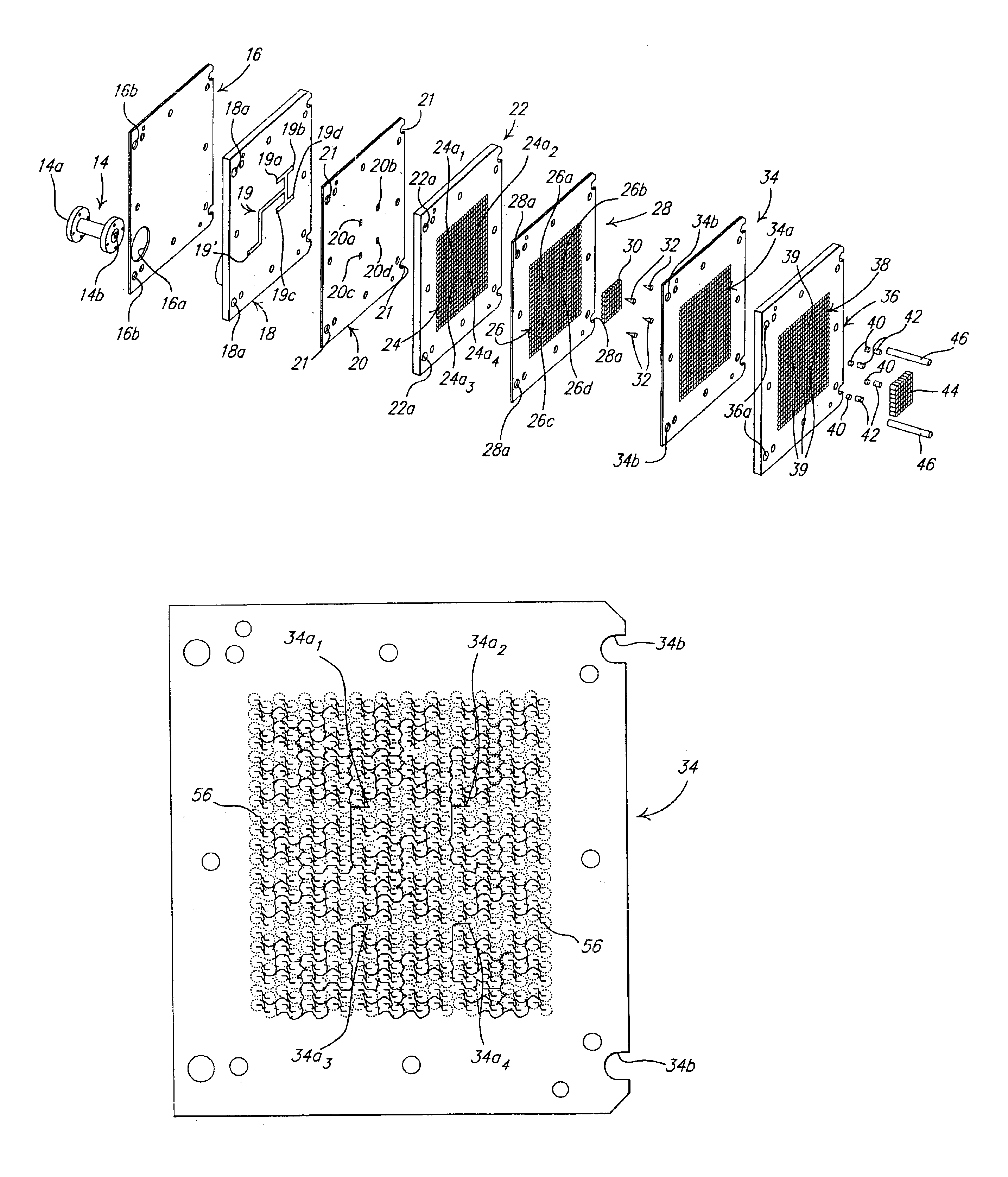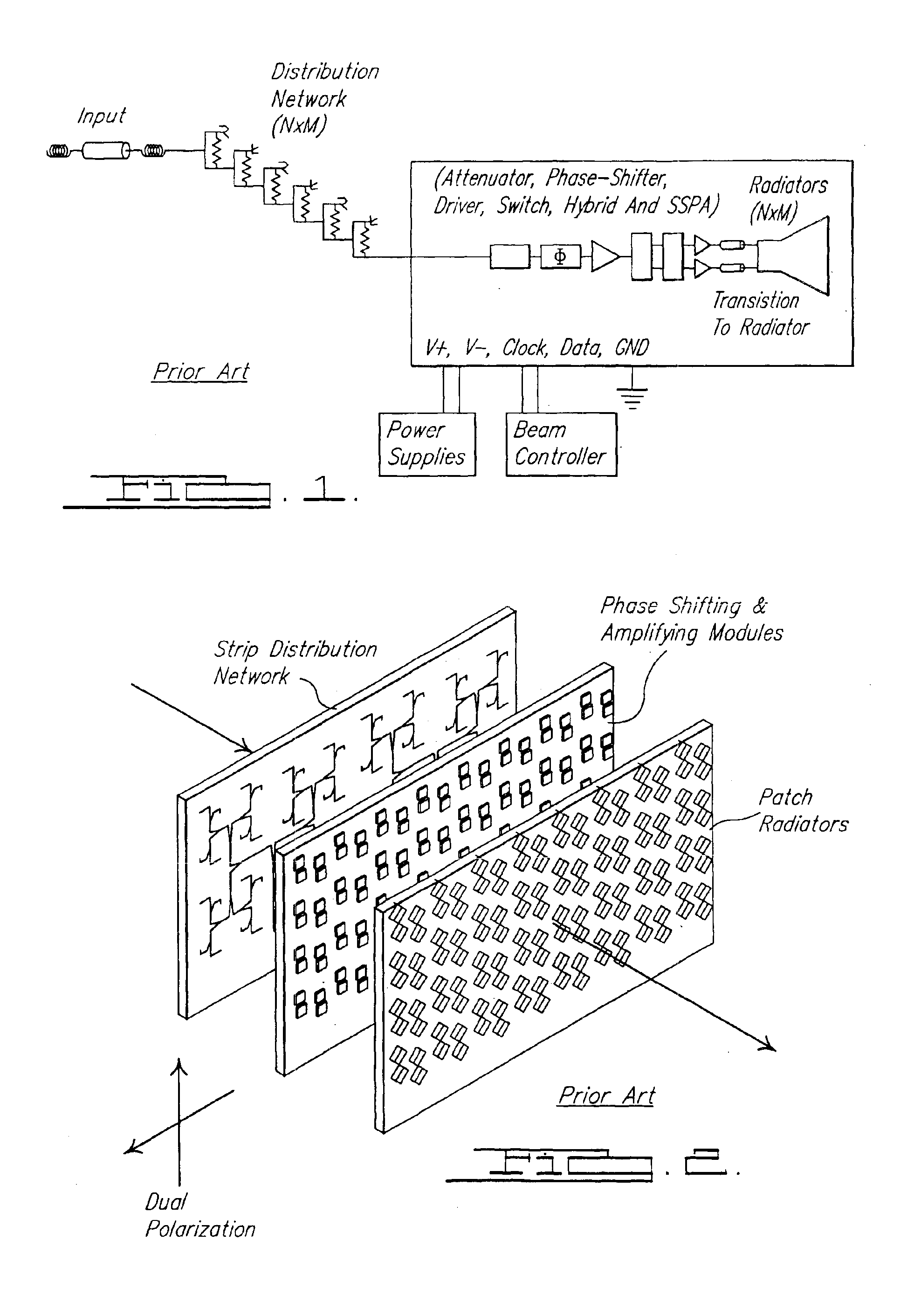Method and apparatus for forming millimeter wave phased array antenna
a phased array and millimeter wave technology, applied in the direction of individual energised antenna arrays, resonant antennas, structural forms of radiating elements, etc., can solve the problems of increasing system complexity and cost, reducing the spacing between radiating elements, and becoming difficult to physically configure control electronics and interconnects within the increasingly tight element spacing, etc., to achieve simple structure, reduce system efficiency, and tight element spacing
- Summary
- Abstract
- Description
- Claims
- Application Information
AI Technical Summary
Benefits of technology
Problems solved by technology
Method used
Image
Examples
Embodiment Construction
[0026]The following description of the preferred embodiment(s) is merely exemplary in nature and is in no way intended to limit the invention, its application, or uses.
[0027]Referring to FIG. 4, an antenna system 10 in accordance with a preferred embodiment and method of the present invention is shown. The antenna system 10 forms an antenna able to operate at millimeter wavelengths, and more particularly at 44 GHz (Q-band) and in accordance with the MILSTAR protocol without requiring advance knowledge of the next beam hopping frequency being employed in a MILSTAR application. The antenna system 10 forms a dual beam system having a plurality of 524 independent antenna modules very closely spaced relative to one another to enable operation at millimeter wave frequencies, and more preferably at about 44 GHz, without suffering significant beam degradation and performance at scan angles up to (or exceeding) 60 degrees. The antenna system generally includes a chassis 11 within which is su...
PUM
 Login to View More
Login to View More Abstract
Description
Claims
Application Information
 Login to View More
Login to View More - R&D
- Intellectual Property
- Life Sciences
- Materials
- Tech Scout
- Unparalleled Data Quality
- Higher Quality Content
- 60% Fewer Hallucinations
Browse by: Latest US Patents, China's latest patents, Technical Efficacy Thesaurus, Application Domain, Technology Topic, Popular Technical Reports.
© 2025 PatSnap. All rights reserved.Legal|Privacy policy|Modern Slavery Act Transparency Statement|Sitemap|About US| Contact US: help@patsnap.com



